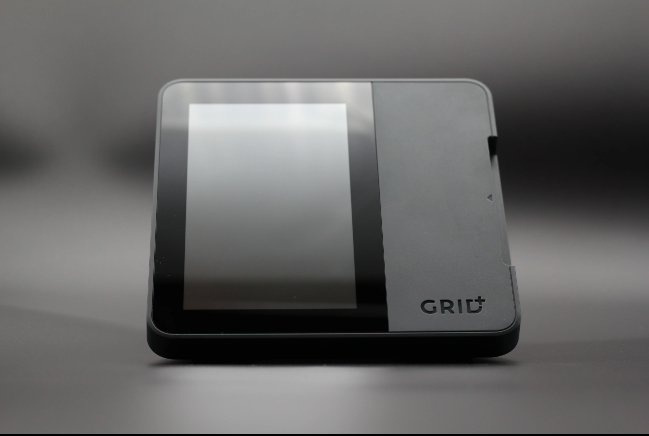Business
GridPlus Turns Crypto Storage into an Art Form

An equally dramatic surge in cyberattacks has shadowed cryptocurrency’s rise. After all, As the market continues to expand, so does the ingenuity of cybercriminals seeking to exploit its vulnerabilities.
For instance, the Orbit Chain hack rocked the crypto world in January 2024, where cybercriminals made off with a staggering $100 million. This attack, which targeted a blockchain bridge, highlighted the persistent vulnerabilities in cross-chain technologies and set a grim tone for crypto security at the start of the year.
Now that digital assets are becoming mainstream, the stakes for security have never been higher. This is why the need for reliable, user-friendly security solutions has become crucial. Crypto hardware company GridPlus gives newbies and seasoned investors a next-generation solution designed to provide ironclad protection for cryptocurrency holdings in today’s high-risk environment.
The Lattice1: Redefining Digital Asset Security and Elegance
GridPlus’ flagship product, the Lattice1, offers robust protection for digital assets. Its sleek design and sizeable five-inch touchscreen set it apart from traditional hardware wallets. However, its real artistry lies beneath its surface.
Central to the Lattice1 is a sophisticated security system. This device employs a hardware security module (HSM) encased in a tamper-resistant wire mesh. This feature enables it to detect any physical tampering attempts, automatically deleting private information if compromised. “It is like having a vigilant guardian constantly watching over your digital wealth,” shares GridPlus Chief Executive Officer (CEO) Justin Leroux.
The Lattice1 supports multiple cryptocurrencies, including Ethereum, Bitcoin, and various Earned Value Management System (EVM)-compatible chains. This versatility makes it an ideal choice for investors with diverse portfolios.
Furthermore, the device’s large touchscreen fosters clear visibility when navigating and confirming transactions—an often overlooked feature when dealing with complex decentralized finance (DeFi) interactions.
Perhaps most impressively, the Lattice1 is designed with the future in mind. With 64 gigabytes of internal storage, it can run more resource-intensive applications directly on the device.
A Look At GridPlus SafeCard
Complementing the Lattice1 is the GridPlus SafeCard system, a portable, personal identification number (PIN)-protected HSM that can store seed phrases and support the creation of unlimited wallets.
The SafeCard system addresses a common dilemma in crypto storage—the trade-off between security and convenience. With SafeCards, users can securely back up their wallets without using vulnerable paper backups or complex memorization techniques.
One of the SafeCard’s most compelling features is its versatility. It can be used standalone for offline storage or seamlessly integrated with the Lattice1 for on-the-go access to keys. This flexibility allows users to manage multiple wallets without switching devices, providing a high level of convenience previously unseen in high-security crypto storage.
Furthermore, its security is equally impressive. It uses a physical unclonable function (PUF) for robust secret storage, a technology that creates a unique key for each device. With PIN protection, this product offers a multi-layered security approach that rivals even the most sophisticated storage solutions.
Experience the GridPlus Difference
Fortunes can be made or lost with a single private key in cryptocurrency. Thankfully, GridPlus has elevated this investment’s security with artistic precision. The Lattice1 and SafeCards merge functionality and design—a true masterpiece in digital asset protection.
“We have carefully considered every aspect of crypto storage. From the tamper-resistant mesh of the Lattice1 to the portable security of SafeCards, each element has been designed to provide maximum protection without sacrificing usability,”shares Leroux.
The result is a storage solution that safeguards digital assets with an elegance that goes beyond basic utility. While security often comes at the cost of convenience, GridPlus has painted a new picture of crypto storage, one that crypto enthusiasts and investors alike can appreciate and trust.
Business
Spynn’s PR Playbook for Startups Turning Funding into Market Leadership

Byline: Jennyfer Ann Valencia
The recent funding boom in India, where startups raised over $428 million between March 10 and March 15, 2025, reinforces the critical role of public relations (PR) in securing investor confidence and enhancing visibility. As competition intensifies, effective PR strategies help startups differentiate themselves and build a strong market presence.
Spynn, a PR agency for startups specializing in securing top-tier media coverage, enables startups to craft compelling narratives that attract investors and maintain a positive brand image.
The Role of PR in Startup Funding
A recent survey conducted by Spynn found that startups with a strong PR strategy are significantly more likely to secure funding rounds than those without. According to the research, nearly 70% of investors say media visibility and brand credibility helped their decision-making process. This highlights PR’s direct impact on a startup’s ability to attract investment.
PR helps startups articulate their value to investors by securing media coverage and highlighting their growth potential. High-profile placements lend credibility and set up startups’ potential, making them more attractive to investors. For instance, a well-publicized success story from a startup like Zolve, one of the top funding recipients, can drive further investor interest and strengthen its brand.
India’s funding surge spans sectors including Batterytech, Edtech, Gaming, Apparel, Aerospace, Manufacturing, Fintech, Energy, and Travel. While this presents opportunities, it also brings scrutiny. Startups must manage their reputations effectively, ensuring consistency in their messaging across media platforms. As a PR agency for startups, Spynn’s expertise in reputation management helps businesses navigate these challenges by maintaining a cohesive brand identity and reinforcing investor trust.
Establishing Credibility Through Media Placements
Research from Spynn also revealed that startups that get featured on Forbes, Business Insider, and other top-tier publications experience a 50% increase in inbound investor inquiries within six months. This shows the value of securing strategic media placements to reinforce credibility and market positioning.
Strong media coverage bolsters a startup’s credibility, reinforcing its market positioning and investor confidence. Spynn ensures startups secure coverage in authoritative outlets, helping them establish themselves as thought leaders. Beyond initial publicity, Spynn focuses on building long-term relationships with media, ensuring sustained visibility and brand consistency.
Spynn’s CEO, Matteo Ferretti, emphasizes the role of storytelling, “Effective PR is about coverage and creating narratives that resonate with audiences. Startups must highlight their unique value and demonstrate how they solve real-world problems.”
PR for Growth and Global Expansion
Spynn’s data indicates that startups leveraging international PR strategies are twice as likely to successfully attract foreign investors and expand into new markets. Media coverage tailored for global audiences enhances cross-border recognition and facilitates partnerships, making PR an essential tool for growth beyond domestic markets.
As Indian startups scale, a strong PR strategy facilitates global recognition. Spynn’s international media reach helps startups gain traction in new markets and attract foreign investors. This is especially crucial for sectors like Fintech and Edtech, where global expansion is key to success.
A well-executed PR strategy strengthens a startup’s digital footprint, ensuring a consistent and engaging presence across platforms. Matteo Ferretti highlights the importance of balance, “A successful PR approach integrates both digital and traditional media to maximize impact and audience engagement.“
Ethical Considerations and Future Trends
Transparency and ethical storytelling are vital in PR. Startups must ensure authenticity in their messaging to build lasting trust. Spynn upholds ethical PR practices that align with principles of sustainability and integrity.
Indian startups must adapt to evolving PR trends, including AI-driven outreach, digital media dominance, and deeper media relationships. As competition grows, startups that take advantage of PR will have a better standing for long-term success.
Spynn’s PR strategies equip Indian startups with the tools to navigate funding surges, enhance credibility, and drive growth. By securing impactful media coverage and managing reputation effectively, startups can strengthen investor confidence and expand their market presence. As India’s startup ecosystem evolves, PR remains an indispensable asset for sustained success.
-

 Tech4 years ago
Tech4 years agoEffuel Reviews (2021) – Effuel ECO OBD2 Saves Fuel, and Reduce Gas Cost? Effuel Customer Reviews
-

 Tech6 years ago
Tech6 years agoBosch Power Tools India Launches ‘Cordless Matlab Bosch’ Campaign to Demonstrate the Power of Cordless
-

 Lifestyle6 years ago
Lifestyle6 years agoCatholic Cases App brings Church’s Moral Teachings to Androids and iPhones
-

 Lifestyle4 years ago
Lifestyle4 years agoEast Side Hype x Billionaire Boys Club. Hottest New Streetwear Releases in Utah.
-

 Tech6 years ago
Tech6 years agoCloud Buyers & Investors to Profit in the Future
-

 Lifestyle5 years ago
Lifestyle5 years agoThe Midas of Cosmetic Dermatology: Dr. Simon Ourian
-

 Health6 years ago
Health6 years agoCBDistillery Review: Is it a scam?
-

 Entertainment6 years ago
Entertainment6 years agoAvengers Endgame now Available on 123Movies for Download & Streaming for Free
